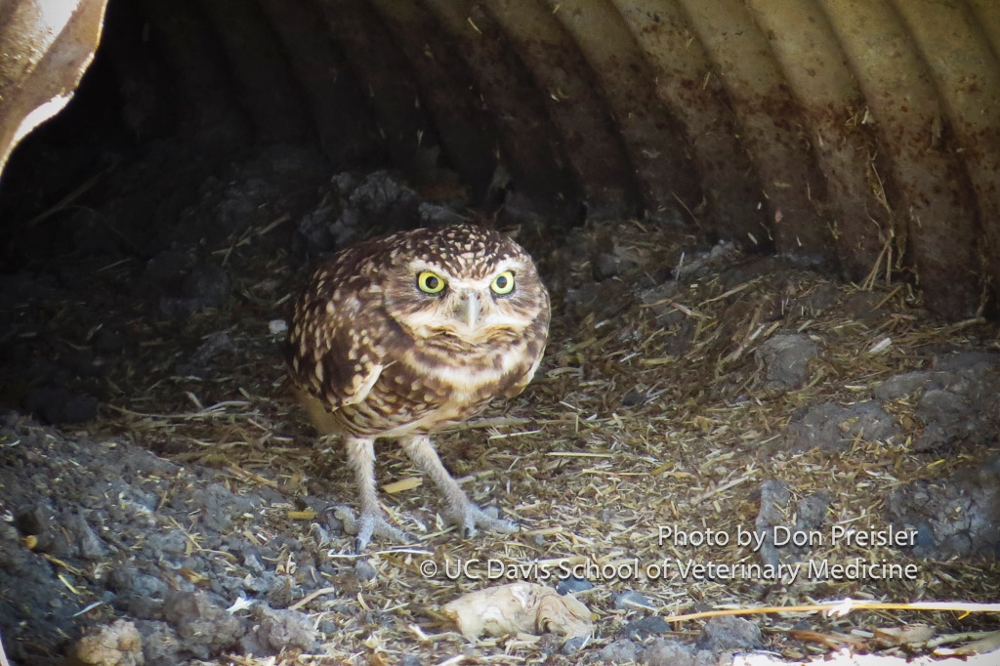About Burrowing Owls
 Western burrowing owls are diurnal owls found from the west coast to the Mississippi river. Burrowing owls live on grasslands where they feed on small vertebrates, such as frogs, lizards and mice, and large insects such as grasshoppers and beetles. The species is most active around dawn and dusk and can often be seen during the day.
Western burrowing owls are diurnal owls found from the west coast to the Mississippi river. Burrowing owls live on grasslands where they feed on small vertebrates, such as frogs, lizards and mice, and large insects such as grasshoppers and beetles. The species is most active around dawn and dusk and can often be seen during the day.
Burrowing owls have large yellow eyes and their bodies are mostly covered in brown feathers dotted with white spots. The owls are relatively small, standing around 15-23 cm. A large part of this height is in their long legs, which is used as their main source of transportation. Burrowing owls are capable of flight and some individuals do migrate, but they are often seen standing on the ground. They live in burrows—in our region most of these burrows have previously been dug by small mammals such as California ground squirrels—although in southern California burrowing owls commonly dig burrows in the sides of irrigation canals. A burrow network is essential for the survival of a burrowing owl because it provides a means to escape from predators such as as hawks. The burrows are also used in spring to lay a clutch of eggs and raise offspring, usually between 3-5 chicks. The chicks are completely helpless after hatching and are taken care of by both parents. Commonly, parents return to the same burrow system each year to breed and raise offspring unless the burrow is destroyed or disrupted, although occasionally “good” burrows are abandoned as well. The average life expectancy in the wild is between 6-8 years.
